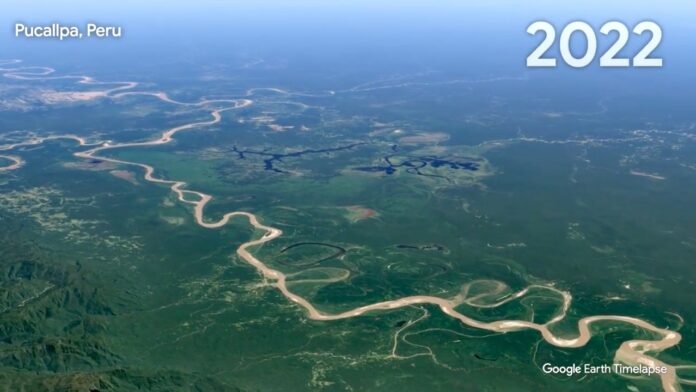Google Earth has added satellite photos from 2021 and 2022 to its zoomable timelapse video of our planet. Journey through space and time with the 4D interactive map, featuring nearly four decades of planetary change—from 1984 to 2022—including emerging irrigation systems, shifting rivers, volcanic eruptions, and transformative wildfires.
“The imagery also captures ways cities have adapted to combat climate change,” Google Earth Engine program manager Chris Herwig wrote in a blog announcement(Opens in a new window), highlighting offshore wind farms in Denmark and large-scale solar installations in Spain.
Google Earth introduced Timelapse in 2021, allowing people to see our planet “in an entirely new dimension—time,” according to the company, which stitched together 24 million satellite images from 37 years to create the interactive experience.
A separate library(Opens in a new window), meanwhile, features more than 800 videos covering 300-plus locations around the world, organized by theme (urban expansion, forest change, infrastructure, agriculture, fragile beauty, megacities, etc.) and region (Asia-Pacific; Europe, the Middle East, and Africa; North America; Latin America; Antarctica).
“From researchers to teachers, anyone can use these videos to better understand our changing planet,” according to Herwig. In fact, it’s already been featured in the 2022 documentary The Territory, which used Timelapse to show deforestation across the Amazon and its effect on local communities.
Recommended by Our Editors
Google’s tech is made possible by the US Geological Survey, European Union, and NASA—the latter of which recently added a Timelapse view(Opens in a new window) to its Images of Change gallery, where folks can see selected scenes as timelapse sequences generated via the Google Earth engine.
To watch clips of Utah’s Great Salt Lake vanishing or Cancún, Mexico’s population growth, choose “Timelapse” (when available) from the viewing options at the bottom of the page. Then press the play/pause button to the left of the timeline, and adjust the video speed (0.25x, 0.5x, or 1x) on the other side.
 5 not so popular Google Maps tricks you should know
5 not so popular Google Maps tricks you should know
Get Our Best Stories!
Sign up for What’s New Now to get our top stories delivered to your inbox every morning.
This newsletter may contain advertising, deals, or affiliate links. Subscribing to a newsletter indicates your consent to our Terms of Use and Privacy Policy. You may unsubscribe from the newsletters at any time.
Hits: 0















